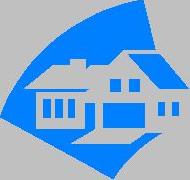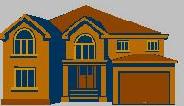
 |
|
| Home Terms | |
| Rake |
|
Information about home, mortgage, insurance, homebuyer, real estate, property, buy home, home insurance, financing, home financing, home buyer, first time homebuyer, homes, homebuying, credit, condo.
Main Page: first time homebuyer, property, mortgage, buy home, homebuying, insurance, home, real estate, credit, |
Definition of Rake
RakeRefers to the slope of the roof at the end of a gable, where the outside part of the overhang forms an upside down V.
Related Terms:Cash Surrender ValueThis is the amount available to the owner of a life insurance policy upon voluntary termination of the policy before it becomes payable by the death of the life insured. This does not apply to term insurance but only to those policies which have reduced paid up values and cash surrender values. A cash surrender in lieu of death benefit usually has tax implications. Creditor Proof ProtectionThe creditor proof status of such things as life insurance, non-registered life insurance investments, life insurance RRSPs and life insurance RRIFs make these attractive products for high net worth individuals, professionals and business owners who may have creditor concerns. Under most circumstances the creditor proof rules of the different provincial insurance acts take priority over the federal bankruptcy rules. DividendAs the term dividend relates to a corporation's earnings, a dividend is an amount paid per share from a corporation's after tax profits. Depending on the type of share, it may or may not have the right to earn any dividends and corporations may reduce or even suspend dividend payments if they are not doing well. Some dividends are paid in the form of additional shares of the corporation. Dividends paid by Canadian corporations qualify for the dividend tax credit and are taxed at lower rates than other income. EndowmentLife insurance payable to the policyholder, if living on the maturity date stated in the policy, or to a beneficiary if the insured dies before that date. For example, some Term to age 100 policies offer the option of taking the face amount of the policy as a cash payout at age 100 if the policyholder is still alive and paying all required income taxes on the amount received or leaving the policy to pay out upon death whereupon the payout is tax free. Independent BrokerThis is a provincial government licensed independent businessperson who usually represents five or more life insurance companies in a sales and service capacity and who is paid a commission by those life insurance companies for sales and service of life insurance products. We for example, have been in business for 12 years and regularly place new business with over twenty different life insurance companies. Cash Surrender ValueBenefit that entitles a policy owner to an amount of money upon cancellation of a policy. DividendUnlike dividends which are paid to company shareholders, participating insurance policy dividends are not based on the company's overall profits. Rather, they are determined by grouping policies by type and country of issue and looking at how each class contributes to the company's earnings and surplus.  Dividend PolicyThis policy governs Canada Life's actions regarding distribution of dividends to policyholders. It's goal is to achieve a dividend distribution that is equitable and timely, and which gives full recognition of the need to ensure the ongoing solidity of the company. It also specifies that distribution to individual policyholders must be equitable between dividend classes and policyholder generations, and among policyholders within any class. Lender (Credit Insurance)Individual or firm that extends money to a borrower with the expectation of being repaid, usually with interest. Lenders create debt in the form of loans. Lenders include financial institutions, leasing companies government lending agencies and automobile dealers. Non-participating PolicyA type of insurance policy or annuity in which the owner does not receive dividends. Participating PolicyA policy offers the potential of sharing in the success of an insurance company through the receipt of dividends. SurrenderGive up certain rights under a policy, or give up the policy itself. Surrender ChargeExpense charges applied when the owner of a policy surrenders a policy for its cash value. Blended PaymentsPayments consisting of both a principal and an interest component, paid on a regular basis (e.g. weekly, biweekly, monthly) during the term of the mortgage. The principal portion of payment increases, while the interest portion decreases over the term of the mortgage, but the total regular payment usually does not change. Built-Up RoofA roofing composed of three to five layers of asphalt felt laminated with coal tar, pitch, or asphalt. The top is finished with crushed slag or gravel. Generally used on flat or low-pitched roofs. Gable End WallThe triangular end of an exterior wall above the eaves formed under a gable roof.  Gable RoofA roof that consists of two sloping planes that meet at the ridge or peak. The planes are supported at their ends by triangular, upward extensions of walls known as gables. Gable VentA louver mounted in the top of the gable to allow the passage of air through the attic. Hip RoofA pitched roof with sloping sides. Overhangpart of the roof that hangs over the wall. Particle BoardPlywood substitute made of course sawdust that is mixed with resin and pressed into sheets. Used for closet shelving, floor underlayment, stair treads, etc. PartitionA wall that subdivides spaces within any story of a building or room. Roof ValleyThe "V" created where two sloping roofs meet. Roof VentA louver or small dome mounted near the ridge of the roof to allow the passage of air through the attic. Shed RoofA roof that pitches up further on one side than the other. Shed roofs are also used over some porches. Related to : home, mortgage, insurance, homebuyer, real estate, property, buy home, home insurance, financing, home financing, home buyer, first time homebuyer, homes, homebuying, credit, condo. |